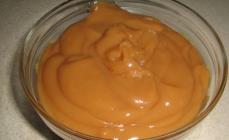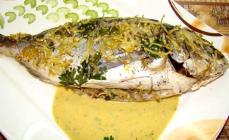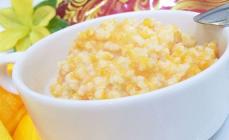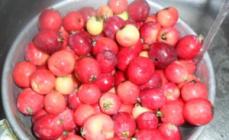Sodium citrates (Sodium Citrates, Sodium Citrate, Monosodium Citrate, Disodium Citrate, Trisodium Citrate, sodium citrate, sodium citrate Sodium single-stroke, sodium citrate Double-sufficient, sodium citrate Three-substitred, E331) - sodium citrate citric acid.
Chemical formula Na3C6H5O7.
Sodium citrate types: Sodium Citrates:
(i) sodium sodium citrate (monosodium citrate);
(ii) sodium citrate double-sufficient (Disodium Citrate);
(iii) Sodium citrate Three-substituted (Trisodium Citrate).
Sodium citrate has a medium-grained salt and sour taste. For this feature of alkaline and alkaline earth curtains (for example, sodium and calcium citrates) are known as "acidic salts" (sometimes so erroneously called citric acid).
Sodium citrate is used mainly as a spice (seasoning), which gives a special taste, or as a preservative (food additive E331).
It includes a flavor additive to the composition of carbonated drinks, many drinks with lemon or lime flavor, as well as the composition of energy drinks such as Red Bull and Bullit.
Citrate can be used as a buffer connection that prevents changing the pH.
It is used to control the acidity of some dishes, for example gelatin desserts. It is used to regulate acidity in coffee machines.
Sodium citrate appears when dissolved in water, a plurality of "instant drugs", such as Alka-Seltzer (antacid - from heartburn).
It is used to reduce discomfort in the infections of the urine-sex system such as cystitis, it reduces acidity with peripheral renal acidosis, and is also used as an osmosis regulator (laxative).
Sodium citrate in the form of a solution is one of the components of the medium to defrost animal sperm during artificial insemination.
Sodium citrate (lat. NatRii Citras) is a sodium citric acid salt, which in the food industry is used as an E331 additive as an emulsifier or stabilizer.
Chemical formula Supplements: Na 3 C 6 H 5 O 7. The most popular today is the 2-water sodium citrate, which has a large concentration of the main substance and perfectly leaving long-term storage.
In view of this additive - crystalline powder white colorwhich is easily dissolved in water, but weakly soluble in alcohol. The powder does not have flammable and explosive properties, as well as non-toxic and does not irritate the skin, but when inhalation may irritate the upper respiratory tract.
For the first time, sodium citrate was used in 1914 in the process of blood transfusion as an anticoagulant. Later, the addition began to use in the food industry in the form of a solution.
Today, sodium citrate on an industrial scale is obtained by neutralizing citric acid source of sodium (for example, caustic soda) and subsequent crystallization.
Due to the fact that sodium citrate has a specific sour salt-salty taste, the E331 additive is applied to improve taste quality Products in the form of seasoning. Also for this feature of the E331 is called "acid salt", to the category of which the lemon acid itself is erroneously.
Another sodium citrate function is to control the acidity of a number of dishes (in particular desserts based on gelatin), as well as the resolution of the level of acidity in coffee machines.
E331 additive is hard to call harmful. Sodium citrate is often used as a medicinal product for the treatment of cystitis, blood stabilization. It helps to reduce heartburn and reduce the effects of hangover.
As side effects of drugs based on sodium citrate indicate: an increase in blood pressure, a decrease in appetite, nausea, painful sensations in the abdomen, vomiting. But in food products, sodium citrate is used significantly in smaller doses than in drugs. In addition, there is no fact that the E331 supplement caused the health of at least one person. Based on this, it can be concluded that the E331 additive (sodium citrate) within reasonable limits are harmless to human health.
Sodium citrates, as a rule, are part of any carbonated drinks, as well as beverages that have a lime or lemon taste. E331 e331 is used in the production of pastes, souffle, marmalade, melted cheese, baby food, yogurts and dry milk. In dairy production, it is used to obtain sterilized and pasteurized milk or equal milk productsAs well as milk canned food, in the manufacture of which long-term heating of milk is required.
E331 additive enters the list of nutritional supplements allowed for use in the food industry in Russia and Ukraine.
Referring to the group of antioxidants, the food antioxidant E331 sodium citrates or as it is also called sodium lemon-acid in the food industry, as a rule, plays the role of an emulsifier or stabilizer. By the way, in view of the fact that the toxic and other negative properties of the food antioxidant E331 sodium citrates are not detected, this additive is permitted to use all over the world, including in the EU countries, in Russia and Ukraine.
The appearance of the food antioxidant E331 sodium citrates can be described as a white powder consisting of small crystalline, which have an acid-salt taste. This substance is great for long storageIt is quite soluble in water, but it is difficult to dissolve in alcohol-containing fluids. In addition, E331 is resistant to ignition, therefore it is not capable of pose a threat as an explosive substance.
The properties of the food antioxidant E331 sodium citrates were opened for the first time - back in 1914. It was then that Louis Egot (scientist physicist from Argentina) together with the Belgian Medica Albert Hastin as an anticoagulant was used sodium citrate during blood transfusion procedure. Since then, E331 began to be actively used not only in medicine, but also in other areas of human life.
Thus, the spectrum of the application of the sodium citrate can be boldably quite wide. For example, in the food industry, the food antioxidant E331 sodium citrate is added during the production of beverages (especially those who need to give the taste of citrus), souffle, jelly, pastes, marmalade, yogurts, melted raw materials, as well as dry milk and children's milk mixtures. In addition, sodium citrate itself is often used as seasonings.
Food Antioxidant Use E331 Sodium Citrates
Due to the fact that this substance participates in many processes that occur in the human body, the benefits of food antioxidant E331 sodium citrate is obvious. First of all, E331 helps to treat such diseases such as cystitis and some other infectious diseases of the genitourinary system. Used sodium citrate and as a laxative.
A wide application of this additive found in donation - thanks to her, the blood is not collapsed for a long time. And also the benefits of food antioxidant E331 sodium citrates are expressed in the ability to reduce acidity and, accordingly, remove the heartburn, a hangover syndrome.
Safe for life daily norm Sodium citrate people are not yet known. Meanwhile, the food additive E331 is recognized as safe for the human life and health, since there are no facts confirming its indulgent effect on the body.
Among huge number Preservatives, which are successfully used in the food industry in our food, the sodium citrate, known as E331 occupies a special place. It is a white powder with a rather characteristic acid-salty taste, which is obtained by a synthesized path of citric acid. For the first time, this substance was artificially created more than 100 years ago, but the industry was widespread only in the middle of the last century.
What is the benefits of e331?
Sodium citrate is an excellent preservative, which is capable of protecting many foods from damage. Among other things, E331 enhances taste different dishesmaking them more spicy and sharp. This is especially important when you need to emphasize the taste of neutral products. Modern cheeses and sausages in which sodium citrate is added, it would hardly be so appetizing without this sour salt-salty additive.
It is noteworthy that in 1914 the sodium citrate was first applied to stabilize the blood composition during overflow, which was a real sensation in the medical world. In addition, this substance helps in the treatment of many diseases, when it comes to stabilizing the acidity of gastric juice. If there is nothing else at hand, then several E331 crystals are able to eliminate even the most severe heartburn.
Scope of sodium citrate
Initially, a preservative E331 was used for medical purposes, and today it is part of various drugs that are used in the treatment of internal inflammatory processes and, in particular, cystitis. In addition, sodium citrate is often used to neutralize the consequences of alcohol intoxication and remove the symptoms of the hangover.
However, the scope of this substance in the food industry is much more wide. Thus, cystitis sodium helps strengthen the taste of carbonated drinks and give a special piquancy to all sorts of spices. In addition, the E331 preservative add to meat dishes and dairy products that need long thermal processing. Jelly and jam, candy and yogurts, various types of canned foods, including juices - in all these products today is often used sodium citrate, which is considered almost harmless to add. In addition, this substance today is added to the coffee machines to stabilize the acidity of the drink and give it a special fragrance.
What is the danger of sodium citrate and should they abuse them?
Manufacturers applying E331 are united that this preservative is absolutely harmless. However, independent studies still show that the side effects of the sodium citrate are still quite a lot. This substance does not accumulate in the body and is easily derived from the natural way with the urine. However, if the concentration of E331 in human blood exceeds permissible normwhich is 1.5 g for an adult, then side effects are possible in the form of a sharp increase in blood pressure, nausea and vomiting, diarrhea, abdominal pain, dizziness and short-term loss of consciousness.
Of course, in food power, the content of E331 is insignificant, but in some drugs can be quite high. Therefore, in the abuse of such drugs with health problems, it is unlikely to be able to avoid. Nevertheless, the conservative E331 is officially resolved to use in many countries of the world, including Russia, and its application is considered the norm when it comes to the food and pharmaceutical industry.
It is a "sodium lemon-acid", "sour salt", obtained from citric acid through a chemical reaction with sodium and crystallization subjected. Chemical formula E331 - Na3C6H5O7.
Was originally used as a powder, the food industry is dealing with a solution.
Now they are mainly used by the "two-wheel sodium citrate", which is concentrated and well kept.
Features and chemical properties of matter
This is an acid-salt white powder, easily dissolved in water (in alcohol - with difficulty) and not toxic. True, inhaling the dry matter is not recommended: it irritates the mucous membranes of the respiratory tract.
It is an antioxidant, which is used as a stabilizer (that is, it helps food to preserve the form, consistency) and the emulsifier (that is, it creates an emulsion from different liquids). Being added to the dish, regulates their acidity. Enhances the taste of lemon and lime in drinks.
Attention! E 331 is responsible for preserving the shape and structure and maintenance of acidity of products, and not for their freshness and absence of fungi and bacteria.
Doctor Albert Hastin and physicist Louis Egot in 1914, this chemical connection was used when blood transfusion: With it, they prevented the material folding. E 331 still use in a similar way when taking analyzes and when storing donor blood.
Where do you use?
This acidity regulator, emulsifier and stabilizer is in demand and distributed. Often itself substance E 331 is used to adjust the taste of food, that is, as seasoning, because it has a pronounced taste.
It is also used to prevent blood coagulation, as mentioned above; and it is used in medicine as a medicine.
So, E 331 is added to:
- Drinks that need to give an acidic taste.
- Drinks with gas.
- Energy.
- Desserts and sweets with gelatin.
- Yogurt.
- Melted cheese.
- Dry milk, incl. Mixtures for nutrition of infants.
- Dairy products.
- Products requiring milk heating: pasteurized and sterilized milk, milk canned food.
In the non-sphere, the chemical connection finds the following application:
- Anticoagulant
- To preserve other biological preparations, except blood.
- In instant drugs.
- For the treatment of renal acidosis.
- For the treatment of cystitis and some other urinary diseases.
- As a laxative.
- When puberty, the substance treats, removing acidity.
- With hangover.
- As an amplifier of vitamin C.
- When analyzing blood to determine the rate of sedimentation of red blood cells.
- In chemistry as a component of some processes.
And recently it was proved that the use of a person about 37 gr. E 331 Reduces the time for which the runner overcomes 5 km.
How harms health?
Sodium citrate is allowed in all countries of the world, because the facts about its negative impact on our body have not been identified. Moreover, he is a medicine. But, of course, you need to remember that everything needs to be used in reasonable doses: even familiar substances like a salt dining room can become poison.
Important! Hazardous to health dose is not defined!
 For example, when making a chemical compound as a medication, a number of side effects may occur. This is, firstly, influence on the digestive system (nausea and vomiting, abdominal pain, lack of appetite), and secondly, an increase in blood pressure. Food consumption E 331, of course, does not require such doses as its medication.
For example, when making a chemical compound as a medication, a number of side effects may occur. This is, firstly, influence on the digestive system (nausea and vomiting, abdominal pain, lack of appetite), and secondly, an increase in blood pressure. Food consumption E 331, of course, does not require such doses as its medication.
E 331 Food supplement is dangerous or not? Cases of poisoning is not fixed. Even a clean substance when the skin gets harmlessly.
In the body, it is present in a natural way, as well as the starting material for it - citric acid.
So, the E331 is likely that the substance does not bring any significant harm. At the same time, it is not natural, and its action is not fully studied. For example, a deadly dose is unknown (for example, at a similar and, apparently, harmless additives - sorbate potassium - it is installed) and the maximum daily dose of use. In any case, the chemical compound is contained in a large number of usual food products And drugs, and completely without it, apparently, the modern person can not do.
Sodium citrate or sodium lemon-chiered (eng. sodium Citrate.) - the general name of a series of sodium salts of citric acid.
Sodium citrates used in pharmaceutical and food industry
In the pharmaceutical, in the form of basic or additional substances that make up the most different drugs and in the food industry are used by the following sodium salts of citric acid:Sodium citrate in medicine
Sodium citrate, as one of the active ingredients in the composition of complex drugs, is used in different fields of medicine. According to the pharmacological sign of sodium, the citrate is included in the group: "Anticoagulants", "Water-electro-balance and KSH regulators" and "means that impede the formation and contributing to the dissolution of the concrections." In the ATX section "B05 plasma-substituting and perfusion solutions" sodium citrate is assigned to ATH Code B05CB02.
Sodium citrate as an auxiliary substance is used in many drugs, in particular, in the RailTser, Nanillaus, Neovir, Aldezin and others.
Sodium citrate as part of oral rehydration salts
Sodium citrates include solutions oral rehydration salts (ORS) used to reimburse the loss of fluid and electrolytes in the body with abundant diarrhea, multiple vomiting, exudation from extensive wound and burn surfaces, discharges through drains and fistulas, frequent receptions of laxatives, as well as for correction of the acid-alkaline medium in the patient's body . In Russia, registered (were recorded) as drugs the following oral rehydration salts with a complex active substance sodium citrate + potassium chloride + sodium chloride + dextrose : Hydrait, hydraulic forte, recider, cititrablukosolyan. The contents of salts and glucose in these preparations, G per 1 liter of the solution are as follows: *)| Ingredient |
The contents of glucose and salts in OSR registered in the Russian Federation as drugs, g per 1 liter of solution *) | |||||
|
Regidron 1 bag |
Hydrait 5 pack. |
Hydrait Forte 5 pack. |
Citraglukosolyan 1 pack 24.9 g, 2 pack 12.45 g (or Pak 11.95 g) **) |
Trihydron | ||
| Glucose (dextrose) Anhydrous |
13,5 | 10 | 17,8 | 20 |
15 |
5 |
| Potassium chloride | 1,5 | 2,5 | 1,5 | 1,5 | 3,5 | 1,25 |
| sodium chloride | 2,6 | 3,5 | 2,35 | 2,8 | 3,5 | 1,75 |
| sodium citrate | 2,9 | 2,9 | 2,65 | 2,95 | 2,9 | 1,75 |
Notes.
*) Different drug preparations are produced in bags intended for the preparation of different volumes of oral rehydration salts; The table, next to the title of the drug, indicates the number of sachets required for the preparation of 1 liter of the solution, and below shows the amount of glucose or salts in the specified number of sachets and the required for the preparation of 1 liter of the ODC solution
**) Citraglukosolyan is available (manufactured) different russian manufacturers, composition, weight of bags may differ from those specified in the table
Sodium citrate - antacid
Sodium citrate is an antacid of the system action (Konorev M.R.). It can be used to prevent regurgitation and aspiration during general anesthesia by applying parenterals as part of premedication funds in patients in emergency surgery. 3% sodium citrate at a dose of 30 ml is assumed orally after the traditional premedication 30-60 minutes before the operation. The maximum antacid effect occurs 20 minutes after its administration (Levichv E.A., Rebakovsky E.V.).On the site site in the literature catalog there are sections "laxatives" and "constipation and diarrhea" containing professional medical articles related to laxatives and their use in constipation.
Sodium citrate in the composition of hemokonservants
- TsFG., Solution used for blood preservation. Active Substances: Sodium Citrate Pentaren Sitters + Sodium Dihydrophosphate Dihydrate + Dextrose Monohydrate + Lemon Acid Monohydrate
- Glucian, Anticoagulant citrate dextrose. Existing substances: sodium citrate + dextrose
- FAGLUCID, CIGLUFAD, CFADA-1. Active substances: sodium citrate + adenin + dextrose + citric acid + sodium dihydrophosphate
Sodium citrate consisting of a means for the treatment of urolithiasis
A drug Blemar Active substances: sodium citrate + potassium hydrocarbonate + citric acid are used to treat urolithiasis as a nephrolithic remedy for urine.Sodium compounds citrate have contraindications, side effects and features of application, a consultation with a specialist is needed.
Sodium citrate - food additive
The composition and requirements for food additives - the sodium salts of citric acid adjusts "GOST 31227-2004. Sodium lemon-acid three-stage 5.5-water food (sodium citrate). Technical conditions ", in return to which from 1.7.2015 g is introduced" GOST 31227-2013. Food additives. Sodium citrate E331. General technical conditions». 
Sodium citrate creates a "refreshing taste of lemon and lime"
Sodium food citrates are divided into:
- E331 (I) - Sodium citrate 1-substituted
- E331 (II) - Sodium citrate 2-substituted
- E331 (III) - Sodium citrate 3-substituted
Who has ever mixed food soda With a solution in the hope of getting a "pop", appreciated the pleasant salty taste of the drink.
Initially, the substance was used as coagulant when overflowing blood. For the first time this happened in November 1914, at the height of the First World War. Merit belongs to Belgian Albert Hastina and Argentine Louis Egoto.
Later, the "acid salt", as sometimes called this, won the food industry due to pronounced antioxidant properties and the ability to improve taste.
The European food additive codification systems secured the E 331 index.
Official Name - Sodium Citrates (GOST 31227-2013). International designation - Sodium Citrates.
Depending on the scope of application, synonyms can be used:
- sodium food citrates;
- sodium lemon acid (chemical name);
- sodium citric acid salt;
- sodium hydrocenters;
- NatriumCitrat (German);
- citrate de sodium (French).
Type of substance
Food supplement E 331 according to technological functions included in the antioxidant group. It is usually used as a synergist of antioxidants, the pH level controller.
Sodium citrates are a group of substances that differ from each other with a chemical structure, molecular weight, acidity level.
Distinguish the following types:
- sodium citrate 1-substituted or mononatrixitrate (aqueous and anhydrous), E331 (I), NAC 6 H 6 O 7 formula;
- sodium citrate 2-substituted, diodatrixitrate, (aqueous), E331 (II), formula Na 2 C 6 H 6 O 7 ∙ 1.5 ∙ H 2 O;
- sodium citrate 3-substituted, trisatrixitrate (aqueous and anhydrous), E331 (III), formula Na 3 C 6 H 6 O 7.
Mononatrixitrates are used for the needs of medicine.
The raw material for the preparation of the food additive E 331 is citric acid. It is neutralized to a slightly alkaline reaction of soda soda or caustic.
Properties
| Indicator | Standard values |
| Color | white |
| Structure | salt citric acid, impurities (sulfates, oxolates) |
| Appearance | crystalline powder |
| Smell | absent |
| Solubility | good in water; Imprint in ethanol |
| Content of the main substance | 99% |
| Taste | sick-salty |
| Density | 1.76 g / cm 3 |
| Others | resistant to heating |
Packaging
Packaging package serve:
- bags grocery made of bags of fabrics;
- bags paper open brands NM or PM;
- drawers from corrugated cardboard for food products.
An additional bag of food unstabilized film should be inserted inside (thickness of at least 0.08 mm).
It is allowed to use another packaging.
Application
Food additive E 331 has a number of properties that allow it to be used in food production: 
- chest Quality Enhancer (carbonated and energy drinks with lemon taste, seasonings);
- acidity regulator (jelly, souffle, marmalade, jams, fruits and berry compotes, baby food mixtures);
- emulsifier (melted cheeses, mayonnaise, animal fats, vegetable oil, ice cream);
- color retainer (meat and sausages, mince, seafood);
- stabilizer (yogurt, dry, condensed and canned milk, fermented milk products).
Sodium citrates in Codex Alimentarius are allowed in 12 standards as a stabilizer and acidity regulator.
Fashionable molecular kitchen Applies sodium lemon-acid as texture when spherifying desserts.
Antioxidant actively uses the pharmacological industry and medicine:
- Sodium citrates enhance action. Almost all dosage forms of vitamin C contain a food additive E 331.
- Mononatrixitrate is one of the components of the preservative solution for blood storage. Combination S. lemon Acid (E 330) forms a stabilizing mixture, binding calcium ions. It protects blood from premature coagulation.
- Effective in the treatment of various urinary tract infections.
In the cosmetic industry, the food additive E 331 is added predominantly in shampoos and liquid soap to regulate the acid-alkaline balance.
Sodium citrates have air-conditioning effects, stimulate foam formation.Benefit and harm
Food additive E 331 is allowed to use in all countries as Safe for health.
In the composition of the products, it is present in minor quantities and is unable to hurt.
Sodium citrates are in the human body. They are involved in the metabolic process, nourish energy cells. In kind, it helps the artificially created additive E 331. Antioxidant protects cell membranes from the attack of free radicals.
Sodium citadel will quickly remove the heartburn, relieve the hangover syndrome.
Drugs with sodium citrates can have side effects associated with individual intolerance to the substance or its uncontrolled use: 
- an increase in blood pressure;
- nausea;
- diarrhea;
- heart palpitations.
Refers to 3 hazard class. Caution should take products with sodium citrates:
- pregnant and nursing women;
- people with heart and kidney pathology;
- sick diabetes.
Main producers
The domestic market of sodium food citrates by 50% is represented by the products of Chinese manufacturers. Among them is leading the company Anhui Fengyuan Biochemical Co. Ltd, which has developed its own highly efficient additive technologies.
More than 1000 tons of additive E 331 per year releases the Russian enterprise "Citrobel" (city Belgorod).
Without olives you can't cook delicious dishes. How to choose them correctly, read in.
- The skiers before a complex descent take sodium citrates to prevent muscle whining.
- Eating food additive E 331 will overcome the popular distance among the runners 5 km for 30 seconds faster.






